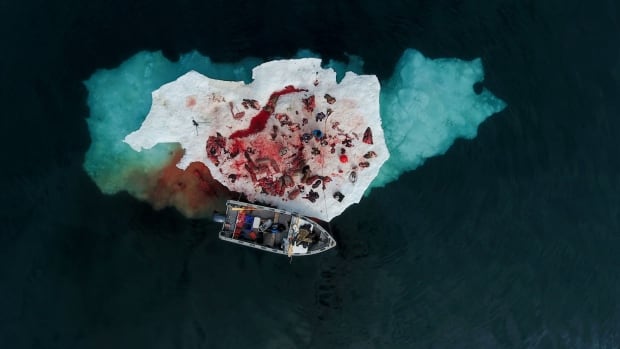[ad_1]

The Art Gallery of Ontario’s new exhibition We Are Story: The Canada Now Photography Acquisition takes a very broad view of the word “photography.” Photograms? That’s photography. Collage? Photography. Images from the internet, manipulated into a mosaic? Photography.
For AGO curatorial fellow Marina Dumont-Gauthier, who helped put the show together, it’s important to continually be reconsidering what photography is, because “photography is still a young art,” compared to painting or sculpture, and it continues to evolve rapidly.
The exhibition showcases ten new additions to the AGO’s collection, which come to the gallery as part of the Canada Now Photography Acquisition Initiative. Photographer Edward Burtynsky and gallerist Nicholas Metivier conceived the initiative in the spring of 2020 as a way to support artists during COVID.

The artists featured in the collection come from a variety of backgrounds, both artistically and culturally, and are based in all corners of the country. The thing they all have in common is that they each bring a unique approach to the medium.
Toronto-based artist Aaron Jones‘ piece “Holding My Grandmother’s Oranges” is the first image viewers see when they walk into the gallery. A five-foot-by-six-foot photo collage, it centres on an image taken from a postcard, advertising California oranges, that hung in his late grandmother’s kitchen. He says that for him, the oranges symbolize what he calls a “utopian access to food.” The oranges are guarded by what he describes as a “gollum” made out of hands. The hands were taken from pictures of NBA players from the 1990s and 2000s that were given to him by a friend.
“My grandma came here from Jamaica,” he says. “My mom and her sisters and brothers are all immigrants. I think it was the first time, when they got here, where they would for sure have food — not that they didn’t have food in Jamaica, but it was more for sure [here]. And for myself, growing up, I was given that privilege of, like, ‘Go in the fridge. Take whatever you want.'”
He adds that, as a “child of the ’90s,” even though he wasn’t a huge sports fan, the images of basketball player’s hands spoke to him.

“[The hands] are very well-lit, and I just liked how real they felt,” he says. “And it’s kind of bringing those childhood influences into the design of the gollum.”
At first glance, Sanaz Mazinani‘s “Tokyo/Damascus” doesn’t appear to be a photography-related project at all. The piece is done in the fractal style of traditional Islamic ornamentation. It’s a type of design that Mazinani — who was born in Iran and came to Canada when she was 11 — was surrounded by growing up. It’s only when you get extremely close that you realize that the pattern is made up of photographs of the Occupy Movement protest in Tokyo and Arab Spring protests in Damascus, Syria, repeated over and over again.
“The concept behind [Islamic ornamentation] is that it transforms your understanding of the space,” she says. “Within the religious context, it’s supposed to kind of transform you to this heavenly other world.”
The piece is meant to evoke that same feeling, but in a more secular context: to get us to transcend where we are right now and imagine a better world.
“In this context, I wanted to use it to take us somewhere else, where the world is not so harsh,” she says. “Somewhere that’s more interesting or better.”

Other pieces in the exhibition also take a wide range of approaches to photography. Some of it comes from a documentary or photojournalism tradition, like photos of the war in Afghanistan by Louie Palu, pictures of Black Lives Matter protests printed on massive banners by Jalani Morgan, and Robert Kautuk’s drone shots of his home community of Kangiqtugaapik, Nunavut, including one of a walrus being butchered on an ice floe.
Others take a more experimental approach, like Laurie Kang’s series of photograms of onion and firewood bags, made by placing the bags directly onto photosensitive paper. Montreal-based Inuk artist asinnajaq took a photo of shallow water in James Bay, then printed it on a thin polyester sheet hung from the ceiling. As audiences walk around the piece, they cause the sheet to move, making it look like the water is shifting.
Mazinani says that, to her, the common thread between all the pieces in We Are Story is the ability of photography to inform the viewer about the world around them.
“All these projects are speaking about something that we’re experiencing together, in different ways, right now,” she says. “They’re current. They’re relevant.”
[ad_2]
